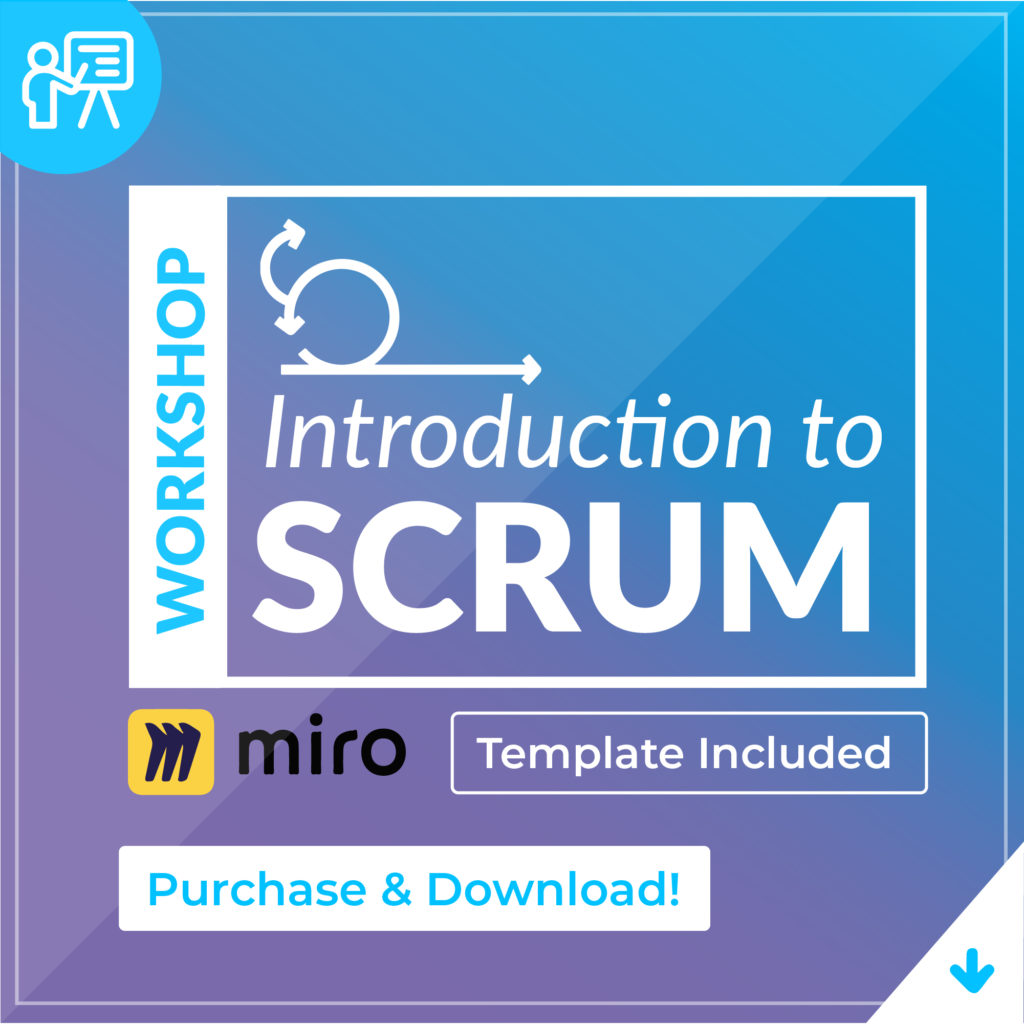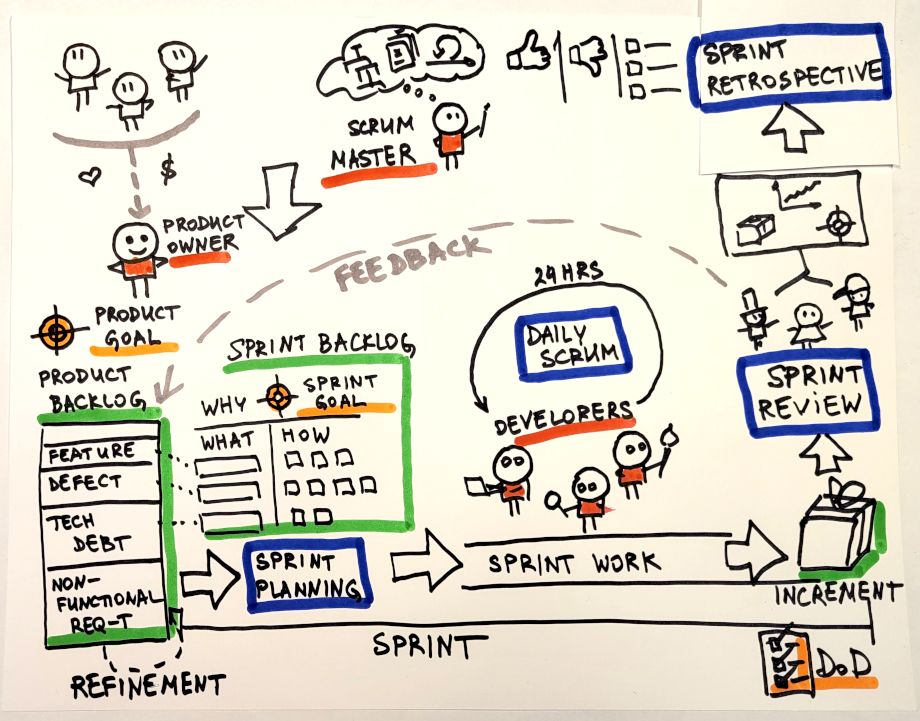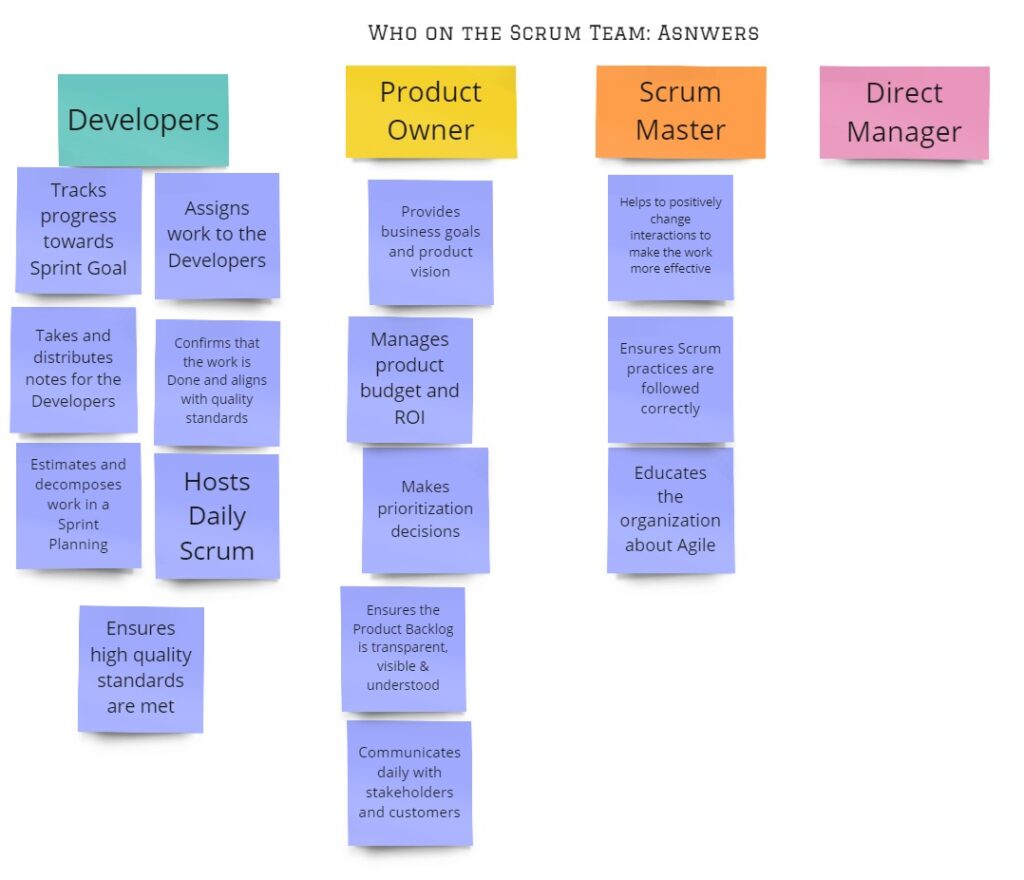So you’ve joined a new team, or maybe a new company as a Scrum Master. Now what?
We know that one of your primary responsibilities is to teach Scrum values, principles, and rules. And if it is the first time for you, you might be wondering how to go about it.
In my first two years as a Scrum Master, I did not touch anything training related because I felt that I’m still too new to this to teach others. However, I was taking away from my teams by not running any training sessions with them.
If I only had the material that I knew would work…
… well, now I do have that!

Run a great training session stress-free
Use my guide for a workshop “Introduction to Scrum” to teach your team the Scrum framework, it’s key elements, roles and events through engaging exercises.
Why you should run training on Scrum for a new team
Sometimes you might find out that not everyone knows what Scrum is, what your role as a Scrum Master is, and what you expect from them as team members.
So it is good to run a short workshop or just a training session to talk about Scrum and Agile in general. That will help you going forward working with this team because everyone will know what you’re talking about when you are referring to Scrum. Scrum values, practices, and other elements. Let’s have a quick look at the scrum guide.
As the Scrum guide says (2020 version!):
The Scrum Master is accountable for establishing Scrum as defined in the Scrum Guide. They do this by helping everyone understand Scrum theory and practice, both within the Scrum Team and the organization.
And that’s why running a short session with your team around Scrum is a perfect idea when you are joining a new team.
How to run the “Introduction to Scrum” workshop
Let me show you how I usually run an Introduction to Scrum session. Whenever you start talking about Scrum, sometimes you’ll find that people think that Agile and Scrum are the same things.
As well as different practices that are usually used in Scrum teams such as planning poker are part of Scrum, even though it is not.
That is why I feel that it is extremely important to show what the differences are between Agile, Scrum, and different practices.
Agile pyramid
- So I always start with this small pyramid. I talk about Agile as the top of the pyramid. Agile is a mindset, a different way of working versus traditional ways of working.
- Now, right below the mindset, we have things like Scrum or Kanban or extreme programming. These are frameworks. This is a good way to show the difference between the general view of how we work and different frameworks that help us become Agile.
- Now, below you have various practices. For example, those are different practices that are not necessarily linked to any specific framework. Those are just good practices that have been proven to work within various frameworks. They help us understand the rules of these frameworks in order to become more Agile.
I find that this simple pyramid helps everyone understand what the difference is between Agile, Scrum, and more, and also sometimes uncovers misconceptions about the fact that planning poker is not necessarily part of Scrum. Just as an example.
So while starting with Aspire is a good thing when you are running a specifically Scrum-related session, it is also good to have a separate session about Agile, but this is not something I’m gonna cover today.
However, if you are interested in getting a workshop on this topic together, I have a guide for that too. It’s the Introduction to Agile workshop guide that works really well with the Introduction to Scrum workshop.
Scrum Values
Then I start to talk about empiricism as well as scrum values. And here’s what I do to explain this concept. I draw a little house and I say at the top of it is Scrum. Scrum stands on three pillars. These three pillars are defined by empiricism – what Scrum really is based on. So the three pillars are transparency, inspection, and adaptation.
In order for the whole structure to be strong, we need trust. Empiricism is based on trust to enable transparency. That’s where the Scrum values come to mind.
And that’s why Scrum values are so important.
And this is where I put all of the Scrum values right underneath trust to say this is what is fueling trust in the team.
And when I talk about values, I’m trying to give specific examples of what this means, and what kind of behavior these values encourage.
This is the small representation that I talk about Scrum before I start jumping into the actual framework and after I talked about the differences between the frameworks, mindset, and practices as well as.
I talk about Scrum elements and the way Sprint works and what kind of roles and people are involved in making this happen.
Presenting the Scrum Framework
So this is the diagram I use when I start to talk about Scrum and how I explain the element’s, roles, as well as artifacts that are part of the Scrum framework. And I usually have a stack of sticky notes with me that have all the important elements and things that I want to highlight.

I will not talk about all the details of what I say. But I encourage you to watch my video on “Scrum in 5 minutes” to see how you can explain the framework too.
Scrum Roles Exercise
Introduction to Scrum can be a very presentation-heavy topic. So it is important to have a check-in at the end of the session to make sure people actually understood different elements of Scrum, values, and other things that you talked about. I usually like to have an exercise at the end, though.
I would encourage having other exercises in the middle of the session to grab people’s attention. And this is the exercise where I talk about the differences between the scrum roles that allow people to see what is really expected from them, from the Product Owner role, from the Scrum Master role, and Developers.
And it also helps uncover a lot of misconceptions about who is responsible for what.
I’ll just show you what I’m talking about, what the exercise is about.
What I usually do, is I prepare a poster and the poster will have four columns, and then I will have various responsibilities for the different roles of the Scrum team that I think usually are misunderstood. Then I list them right here. For example, who is responsible for tracking the team’s performance?

Very, very usual misconceptions about this part, especially coming from the traditional way of working with people and traditional way of management.
When you ask this question: “who is responsible for tracking the team’s performance?” – most of the time you’ll have the answer that it’s the Scrum Master’s responsibility.
This is a good coaching opportunity to talk about why this is incorrect and explain why it’s the Developers themselves.
Creating alignment around the Scrum framework
Those are the four things that I do in a Scrum overview.
It usually takes an hour to go through all these topics. It opens up a lot of great discussions and allows you to focus people’s attention on what’s important and not just the process.
I’m actually very interested in knowing how do you teach Scrum? What are different exercises or topics do you cover when you are doing a Scrum overview? Do you do some games? Do you use Lego?
To join the discussion, follow us on social media platforms!
How do you teach Scrum and how do you spread the knowledge about the framework in such a way that people are willing to learn more?



